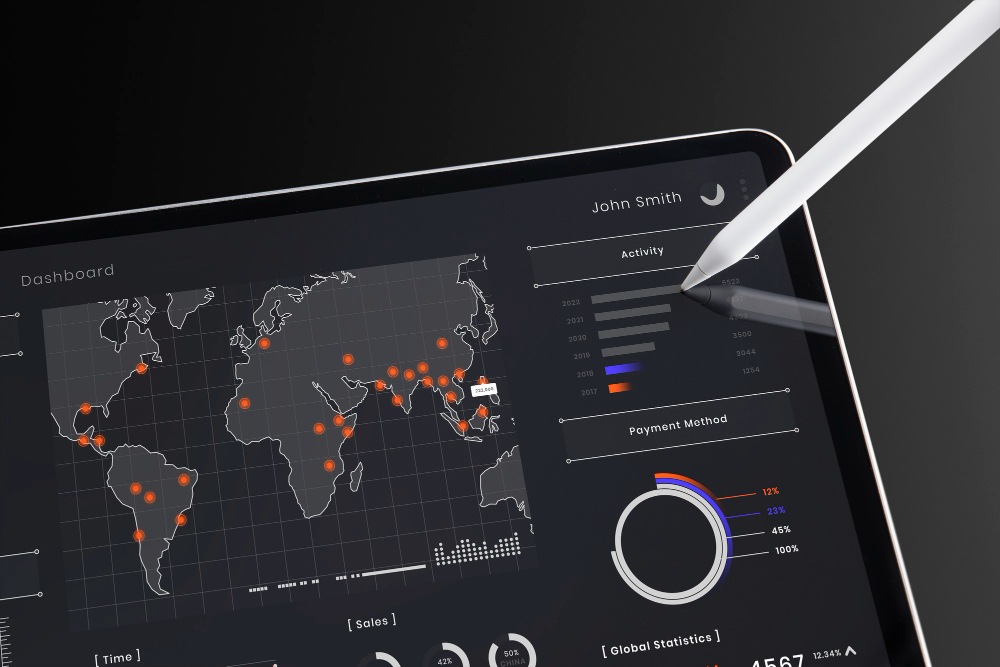
HIPAA-Compliant Geofencing Ads: Strategies for Effective Patient Outreach
Introduction

In the rapidly evolving world of healthcare marketing, geofencing ads have emerged as a powerful tool for patient outreach. By targeting patients within specific geographic areas, healthcare providers can deliver timely and relevant messages that enhance patient engagement. However, the use of geofencing in healthcare requires careful consideration of HIPAA regulations to ensure patient privacy and compliance. This blog delves into the role of geofencing ads in healthcare, the importance of reaching the right patient audience, and the strategies for executing HIPAA-compliant geofencing campaigns.
Compliance Strategies for HIPAA-Compliant Geofencing

How to Execute HIPAA-Compliant Geofencing Campaigns
Executing a successful geofencing campaign in healthcare requires more than just pinpointing a location on a map—it requires a deep understanding of HIPAA regulations and patient privacy. To stay compliant, healthcare marketers must focus on using de-identified data, securing patient consent, and ensuring transparency in all location-based marketing efforts.
For more foundational knowledge on geofencing, check out HIPAA-Compliant Geofencing Ads: Your Guide to Location-Based Healthcare Marketing.
Ensuring Patient Privacy in Location-Based Marketing Efforts

Patient privacy is paramount in healthcare marketing, and geofencing campaigns are no exception. To protect patient data, marketers must ensure that any information used in geofencing ads is anonymized and that no identifiable patient information is shared without explicit consent. This approach not only safeguards patient privacy but also builds trust with your audience.
Best Practices for Using De-Identified Data in Geofencing

Using de-identified data is a cornerstone of HIPAA compliance in geofencing. This involves removing or masking any information that could potentially identify an individual, such as names, addresses, or specific health conditions. By leveraging de-identified data, healthcare marketers can still deliver targeted and effective messages without compromising patient privacy.
For more on using advanced geofencing techniques, see HIPAA-Compliant Addressable Geofencing: Advanced Strategies for Healthcare Marketing.
Managing Consent and Transparency in Geofencing Campaigns

Transparency is key when it comes to geofencing in healthcare. Patients should be fully informed about how their location data is being used and should have the option to opt in or out of geofencing campaigns. Clear communication about data usage and robust consent management processes are essential to maintaining HIPAA compliance and ensuring patient trust.
Case Studies of HIPAA-Compliant Geofencing in Healthcare

Examples of Effective Geofencing in Healthcare
Real-world examples of HIPAA-compliant geofencing campaigns can provide valuable insights for healthcare marketers. These case studies demonstrate how healthcare providers have successfully used geofencing to engage patients, improve appointment attendance, and promote health services—all while maintaining strict adherence to HIPAA regulations.
For insights into integrating technology with HIPAA compliance, visit HIPAA-Compliant Marketing: How to Integrate AdTech and MarTech in Healthcare.
Success Stories of Geofencing Campaigns That Adhered to HIPAA

Successful geofencing campaigns in healthcare not only meet marketing goals but also set a standard for compliance. By carefully planning and executing campaigns within HIPAA guidelines, these healthcare providers were able to achieve impressive results while safeguarding patient privacy.
A remote naturopathic doctor sought to enhance their digital presence and increase online consultations by launching a 12-month geofencing advertising campaign with a $3,000 budget. The campaign focused on targeted ads, engaging content, geofencing, and retargeting strategies to attract new patients across a broader geographic area. Ads were placed within health and wellness apps, websites with contextual keyword search results, and geofenced locations like wellness centers and clinics. This approach yielded 148 website clicks, resulting in a cost per click of approximately $20.27. The increased traffic boosted online engagement, leading to more inquiries and bookings, and solidified the doctor’s presence in the competitive field of naturopathic medicine. The campaign's success underscores the effectiveness of targeted geofencing advertising for remote healthcare providers.
Lessons Learned from Non-Compliant Geofencing Practices

Not all geofencing campaigns in healthcare have been successful—some have faced challenges due to non-compliance with HIPAA regulations. These lessons serve as important reminders of the potential risks associated with location-based marketing in healthcare and highlight the importance of following best practices to avoid similar pitfalls.
Potential Challenges and Solutions in Geofencing for Healthcare

While geofencing offers significant benefits for healthcare marketing, it also comes with its share of challenges. From managing patient consent to navigating complex HIPAA regulations, healthcare marketers must be prepared to address these issues head-on. This section explores common challenges in geofencing and offers practical solutions to help healthcare providers successfully implement compliant campaigns.
Conclusion

Geofencing ads are a powerful tool for healthcare marketers looking to enhance patient outreach and engagement. However, the success of these campaigns depends on a thorough understanding of HIPAA regulations and a commitment to patient privacy. By following the compliance strategies outlined in this blog, healthcare providers can leverage geofencing to reach the right audiences while maintaining the highest standards of privacy and trust.
Sign up for List Converter Pro to start protecting your patient's data for as low as $97/month.